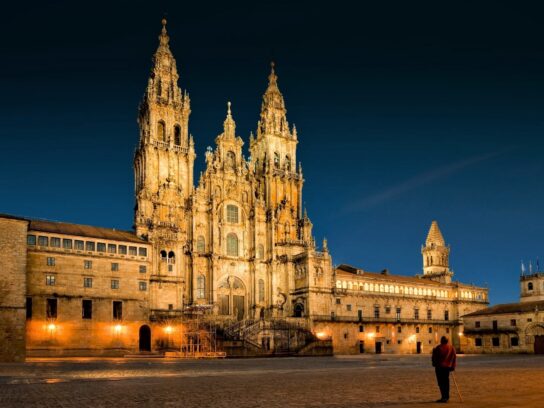
Two months ago I gave you some tips for tackling the famous Camino de Santiago 500-mile path across northern Spain. This month I’ll tell you about some of the highlights of this terrific region.
Pamplona is of course famous for the running of the bulls each morning during the eight days of the raucous Festival of San Fermin, one of the biggest parties in the world. But it is also a lovely town with a beautiful central square and old town, historic city walls, great art, and excellent food, especially foie gras. I am not talking about tinned, processed, ground-up goose liver – I mean an unadulterated, pure slice of warm goose liver, served on toast with sea salt. This fantastic dish is virtually impossible to find in the U.S., but is readily available in northern Spain, and is half the price and usually better than the typical French version. For a foie gras that earned a rare Toulmin OMG (Oh My God!), my wife and I recommend El Gaucho restaurant, located just off the main square in Pamplona.
The city of San Sebastian has one of the most gorgeous harbors in the world, was honored as a European Capital of Culture in 2016, and has more Michelin stars per capita than anywhere else in the world. The town has been the playground of persons as varied as Mata Hari, the Spanish royal family, and Leon Trotsky.
The Guggenheim Museum in Bilbao was completed in 1997 and was designed by the architectural genius Frank Gehry. Susan and I generally don’t like modern architecture (especially the concrete monstrosities of the 1960/70s like the FBI headquarters and L’Enfant Plaza in DC) but Gehry’s playful creation of glass, limestone and 33,000 sheets of titanium is absolutely astounding. We spent hours wandering around the building, taking photos of all the amazing sight lines, and would go back in a heartbeat. That great museum began Bilbao’s renaissance, and it was named the Best European City of 2018.
The tomb of El Cid is in the magnificent Cathedral of Santa Maria in the lovely and historic town of Burgos. From the 1961 Charlton Heston-Sophia Loren movie you might think that the Christian hero El Cid fought only against the Muslims, but in fact his life, like Spain at the time, was much more complex. First he fought against the Christian and Muslim enemy kingdoms of his native Leon and Castile. Then in succession he fought for the Muslims of Zaragoza, against the Christians of Aragon and the Muslims of Lerida, for two Muslim kingdoms against the Moroccan Muslim Almoravids, then against the Muslim kingdom of Valencia. Finally, he ruled Valencia as a pluralistic state with the enthusiastic support of both its Muslim and Christian residents. Busy fellow!
Of course, the premier site in entire region is the town and cathedral of Santiago de Compostela, the climactic terminus of the Camino. The town and cathedral are a UNESCO World Heritage site (separate from the French and Spanish trail Heritage sites) and the town was named in 2000 as a European Capital of Culture.
Inside the Cathedral the two main attractions are the astounding Botafumeiro and the statue of St. James. The Botafumeiro (“smoke sprinkler” in Galician) is a 170-pound, five-foot-tall smoking censer that swings up to 69 feet high in its 213-foot arc down the nave of the Cathedral of Santiago de Compostela. Eight athletic “tiraboleiros” get it going in its swinging holy ritual, originally designed to disguise the smell of the sweaty pilgrims and to carry their prayers, like the fragrant frankincense smoke, up to God. In most years this hypnotic ceremony only happens on about 10 to 12 days per year – be sure to time your trip so you can see it. (Or you can pay about $350 for a special ceremony just for you!) Be prepared to duck if necessary – in its 1000-year history there have been five accidents, one in 1499 when the Botafumeiro broke loose from its rope and crashed out a window, and two in modern times, resulting in a broken nose and some broken ribs.
The large jewel-encrusted statute of St. James stands above the crypt where his bones are held inside a silver chest. Legend says that the saint preached in Spain before returning to Palestine to become the first Apostle to be martyred – then his body was brought back to Spain for burial. He is the patron saint of the country and Galicia. When you visit, be sure to use the narrow passage behind the statue to embrace the saint. Then go down to the crypt to pay your respects to his remains.
Now you have completed your Camino pilgrimage!
Photos courtesy Lew Toulmin
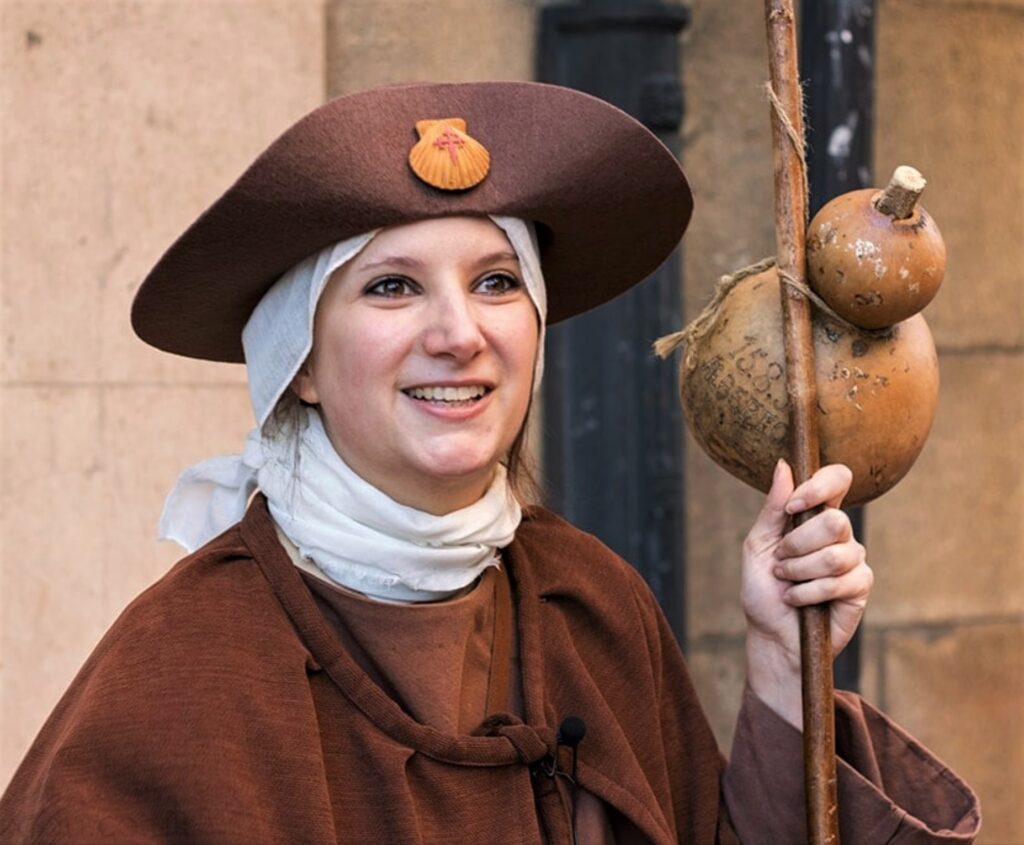
A. A Camino pilgrim dressed in medieval garb – note the shell of St. James on her hat, and her long staff with attached water gourd.
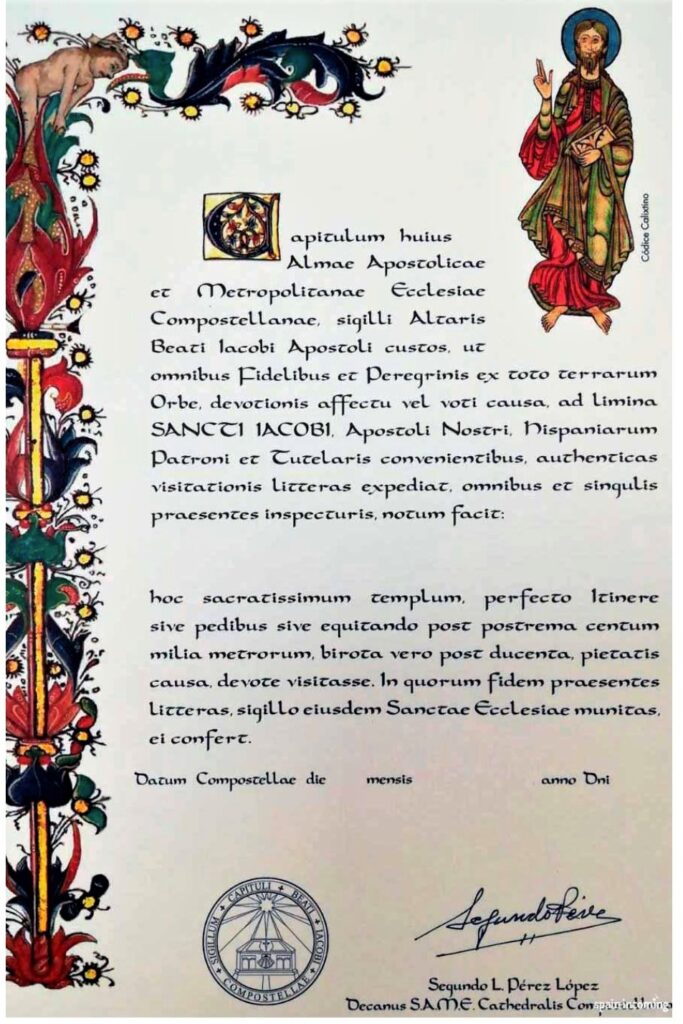
B. The much-sought-after, 1000-year-old Compostela certificate awarded to Camino pilgrims, now given to persons who have walked or ridden on horseback on an approved trail at least 100 kilometers to Santiago, or bicycled at least 200 kilometers. The certificate states in Latin that the pilgrim, “for devotion or by taking a vow” has undertaken a journey to “the Church of the Apostle St. James.” In medieval times this certificate guaranteed the pilgrim three days of treatment in the hospital at Santiago – very useful after hiking hundreds of miles across Europe. The certificate was so prestigious in that period that it was widely counterfeited, and the Pope had to issue a Bull, excommunicating the counterfeiters and the bearers of false certificates.
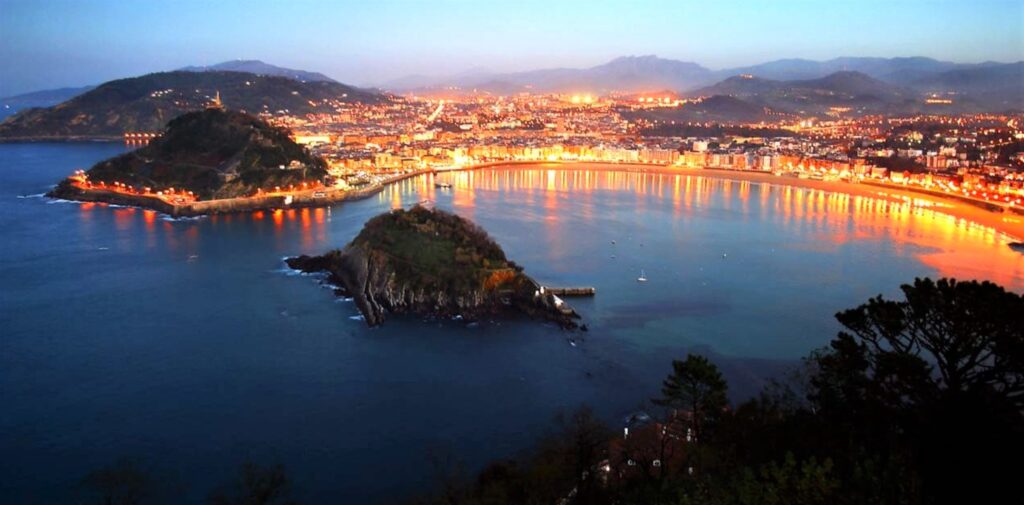
C. The beautiful, almost circular harbor at San Sebastian. The town was honored as a European Capital of Culture in 2016.
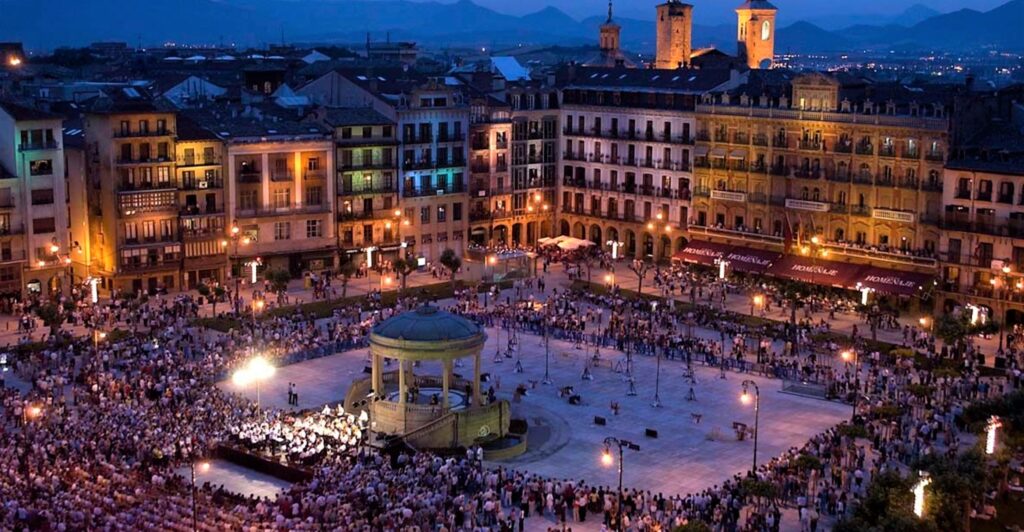
D. The main town square in Pamplona, Spain. Pamplona is the home to the world-famous, sometimes fatal running of the bulls on each of the eight days during the wild Festival of San Fermin.
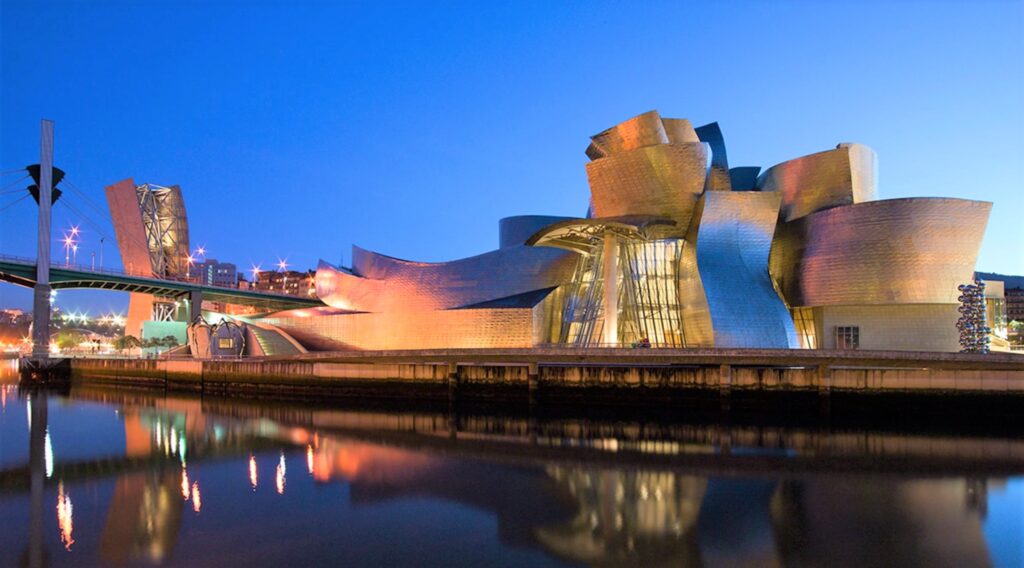
E. The Frank Gehry-designed Guggenheim Museum in Bilbao, Spain, one of the premier modern art museums in the world. It inspired the renaissance of this previously declining industrial town.
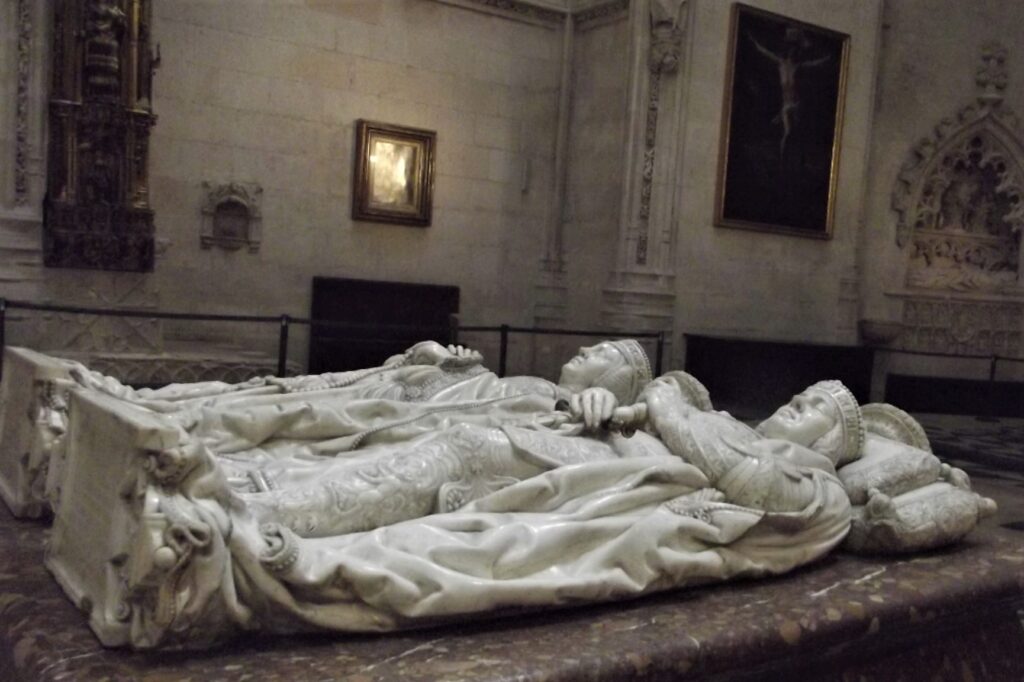
F. The tomb of the great warrior El Cid Campeador (the “Lord Champion”) and his wife Doña Jimena Díaz in the UNESCO World Heritage site of St. Mary of Burgos cathedral, in Burgos, northwest Spain. Cathedral construction started in 1221 and took over 340 years to complete.
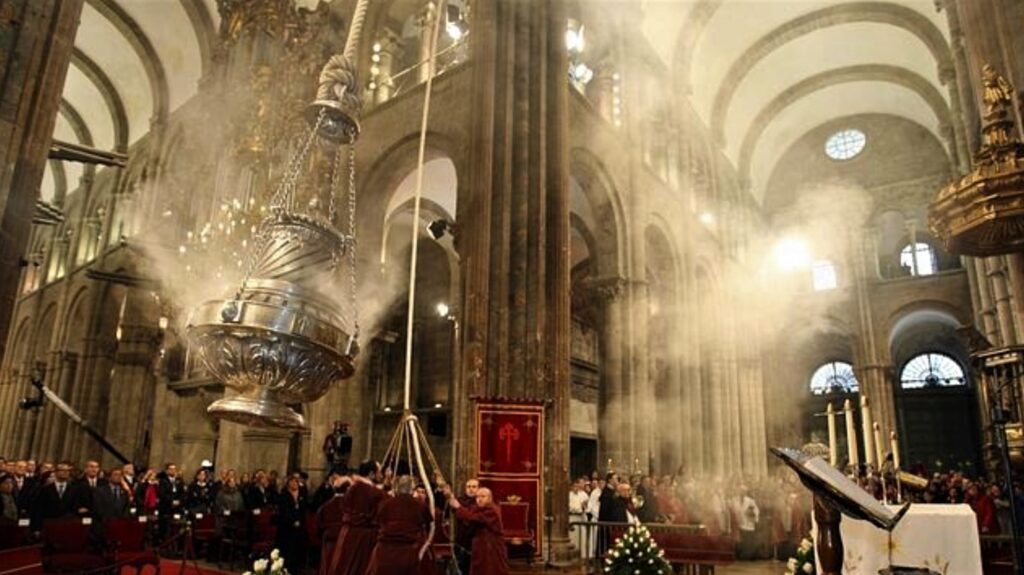
G. The Botafumeiro is a 300-pound, five-foot-tall swinging censer that swings up to 69 high in its 213-foot arc down the nave of the Cathedral of Santiago de Compostela. The team of eight athletic robed “tiraboleiros” that gets the massive censer swinging is in the lower center left of the photo, at the end of the rope.
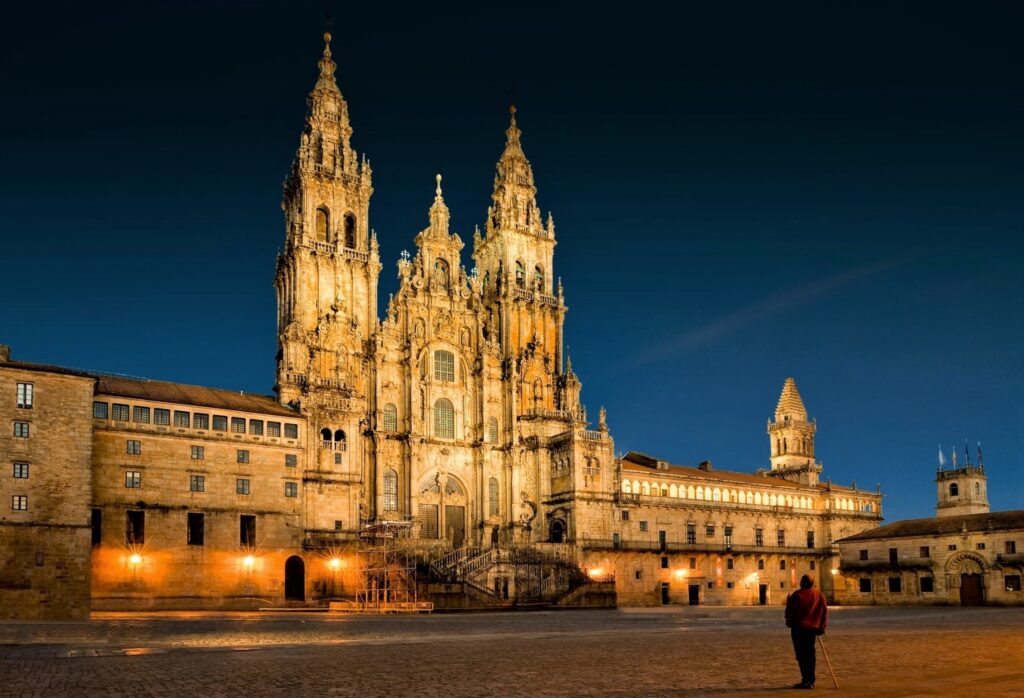
H. The Cathedral of Santiago de Compostela, begun in 1078, dedicated to St. James the Apostle, is the end point of the Camino de Santiago.
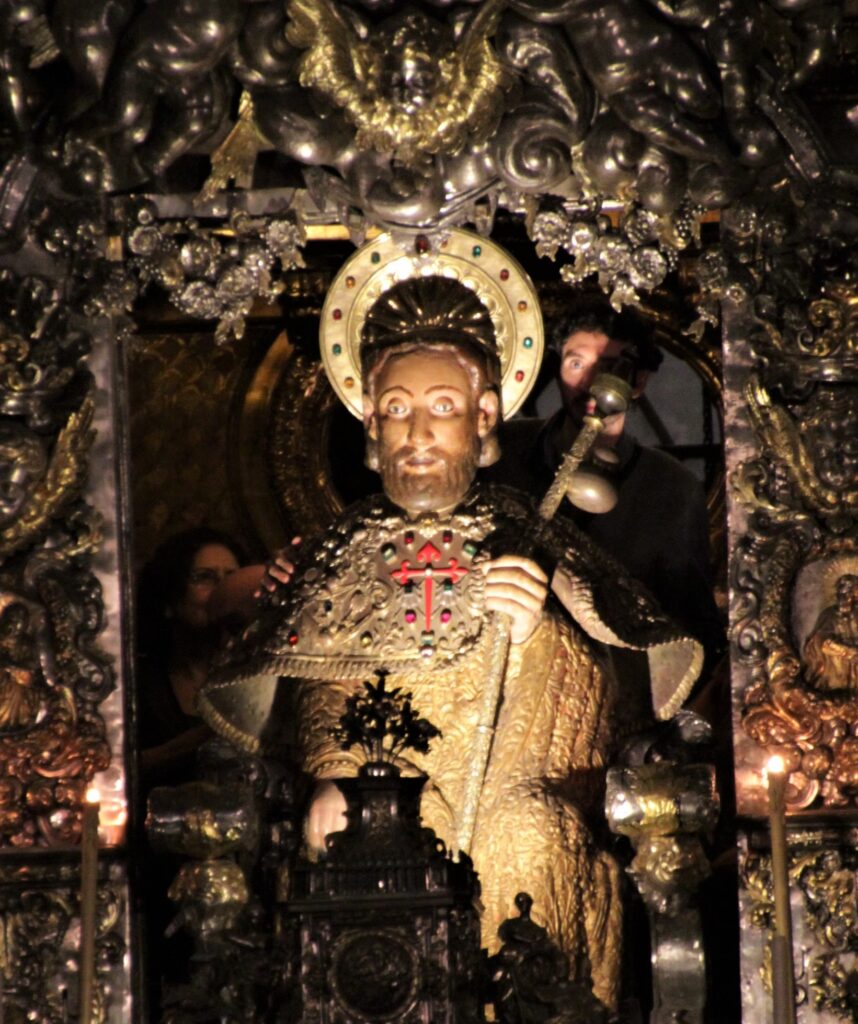
I. A closeup shot of St. James (Santiago) the Apostle, whose bones are in a crypt below the statue. Pilgrims and visitors can enter a narrow passage from the right and stand behind the jewel-encrusted statue and embrace St. James, to get more of a blessing. Look closely to see the face of a male pilgrim to the right of the statue’s halo, and a woman pilgrim and her fingers on the center left.

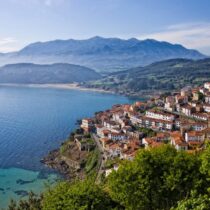
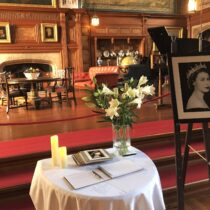

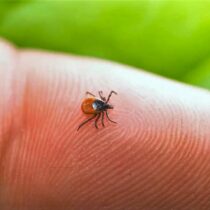
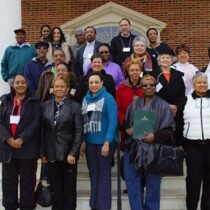



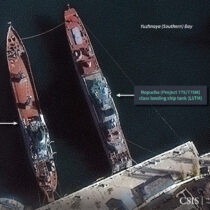
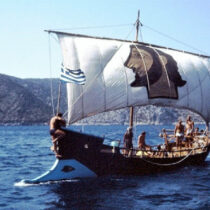
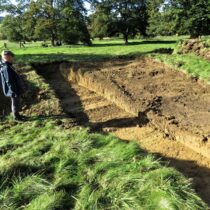
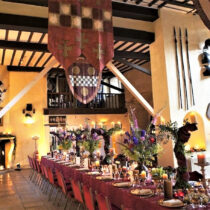

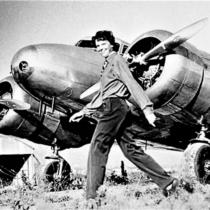
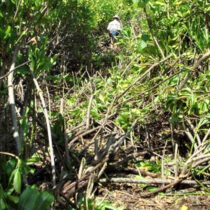
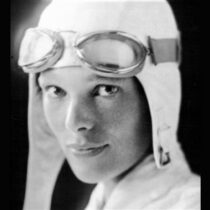



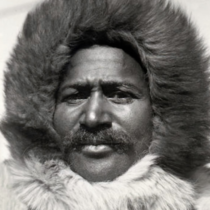
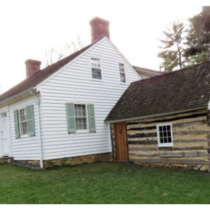
Comments are closed.